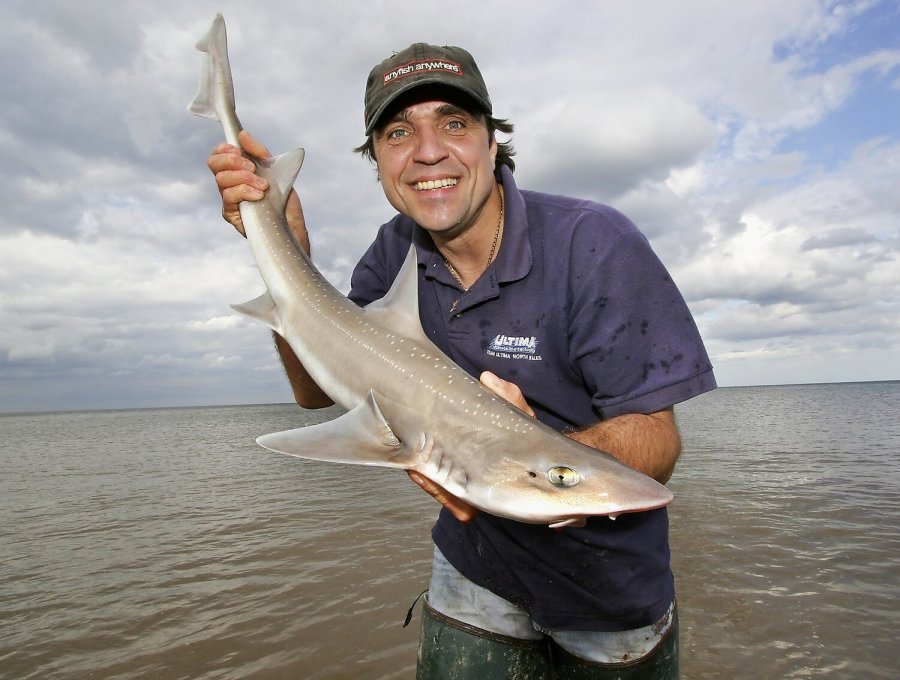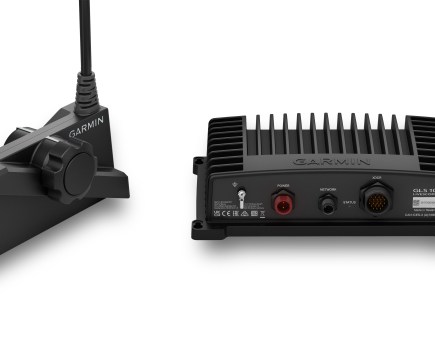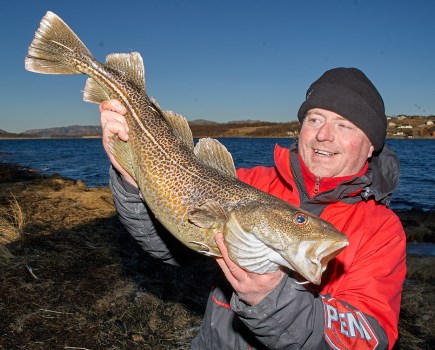Spring signals the arrival of these exciting sharks, which provide superb sport for shore and boat anglers.


Noted for their fighting abilities smoothhounds are a top target for both boat and shore anglers.
They are commonly available too, being well distributed throughout the English Channel and up the east coast as far north as the Holderness coast with the Thames estuary and Lincolnshire hotspots. Good numbers show inside the Bristol Channel, off the North Wales coast, off Lancashire and Cumbria, and in the southwest of Scotland off the Mull of Galloway.
Their average weight off the shore is around 4lb to 8lb, but when fishing afloat double-figure fish are common. Fish over 15lb can be classed as a specimen in most areas with a 20lb fish the fish of a lifetime.
WHEN & WHERE TO FISH
In the English Channel the hounds can show by late March, but April is accepted as the main month with the end of April through to July seeing the best catches, but fish still being caught right through to October or later.
May is more the typical arrival time along the east coast as well as in the Bristol Channel and they’ll stay until September in numbers. In North Wales, Lancashire, Cumbria and south-west Scotland, the smoothhounds show from mid-May and will leave by early September as a general rule.
In areas where the water carries permanent colour you can catch smoothies off the shore in daylight, but most anglers prefer to target them in darkness when the fish come very close inshore looking to work over clean sand, but more typically over mixed rough ground or rough ground. A normal trait with this fish is that they appear at specific section of coast, deplete it of food over three or four tides, then move on. Anticipate this and be prepared to keep moving marks to keep in contact with the fish.
Boat marks in bigger estuaries are typically main tidal areas or you could try where there are obvious channels or areas of rougher ground such as shallow reefs. In open water, the best spots are rough ground where the hounds hunt crabs.
TOP TIDES
Smoothhounds like some tide run, so it tends to be the bigger spring tides that produce the best shore fishing. They often show about two hours into the flood just as the tide run is really picking up and bites reduce in number towards high water as the tide run eases. They can though, sometimes stay within range on the ebbing tide, though longer casts are likely to be needed.
The best of the boat fishing also occurs on the bigger tides, especially those rising up to the bigger springs. But, in estuaries where the tide run is naturally faster, then smaller neap tides will also produce. Again, it’s the middle hours of the flood and ebb when the tide run is stronger and normally fish best.

BAITS
Top shore baits are peeler crabs or soft crabs. Don’t make the baits too big. A crab section a little bigger than a 50p piece is more than enough. Bigger baits are often played with then dropped giving false bites. Although hounds will occasionally take worm baits, rag being better than lug is some areas, the only other really effective bait is squid, again presented big enough to fully cover the length of the hook and to be pushed an inch or so up the hook trace.
The same baits work well off the boat, but hardback crabs can be very effective on offshore rough ground marks. Simply pass the hook point either through the corner of the shell right or left of the head or pass the hook fully through from underneath the shell and up through the top shell at the very rear of the crab’s body to leave the hook point well clear.






TACKLE
The Penn Prevail 11 LE Surf beachcaster, which has a length of 14ft 6in and rated to cast 4-8oz (100/250g), is perfect for the majority of shore smoothhound fishing covering both surf beaches and rough ground. It is well matched to the Penn 525 Mag4 multiplier reel. The 525 has the line capacity to load with 20/22lb mono line, which will cope with most mixed or rough ground marks. The 525 Mag4 multiplier also has stainless steel gears and smooth drag system alongside the ability to cast to extreme range making it the ideal reel.
Anglers preferring to use a fixed-spool reel should look at the Surfblaster 3 Long Cast, which also compliments the Prevail 11 LE Surf to produce a rod and reel combo that with even the simplest casting styles will deliver ultra-long range fishing capabilities. Other reels to consider are the Penn Wrath 8000 if you like to use mono line as it has a deep spool configuration. Also, the Penn Rival Long Cast Gold 7000LC is another quality Long Cast spool reel best suited to braid lines and with long casting in mind.
Braid lines on the fixed-spool reels should be 30lb for general fishing with a 60lb or 80lb braid leader to take the full shock of the initial cast. An all-round mono line suited to general surf fishing would be 20lb with a 60lb mono leader. Over rougher ground step up to 22/25lb line and a shockleader.
For boat fishing, look at the Penn Fathom 2 Level Wind, the Penn Warfare and Penn Squall level-wind reels in the 20 or 30 sizes. These are ideal for both braid and mono lines. For braid only, the Penn Fathom lever-drag single speed or two-speed have been best sellers for some time and are still the reels by which to to judge others. Use 20lb mono or 30lb braid on these reels.
The Penn Prevail Boat rod, either in 12/20 and 20/30lb-class and 7ft in length, covers all offshore smoothound options. Choose the 12/20lb rod for shallower water and light tide run areas, with the 20/30lb version ideal for deeper water, faster tides and the power to bully big fish back to the boat.
Having the ability to cast a bait away from the boat to get your bait fishing out on its own can have a positive effect on your catches. This is where having an uptide rod and reel pairing available pays real dividends. The Penn Prevail II Uptide at 9ft 6in and casting up to 10oz with the Penn 525 Mag4 multiplier loaded with 20lb mono line and 50lb shockleader can be cast 40 yards plus with ease even from the deck of a boat, giving you the ability to explore more ground and locate the fish holding hotspots.
RIGS
The best rig for shore fishing is a simple one-hook pulley. A single size 4/0 Mustad Viking hook, or a similar pattern, is as big as you need to go for hounds. You can use a two-hook Pennel rig, but experienced anglers find the second hook rarely gives an advantage. Make the pulley rig from 80lb mono with a 40lb fluorocarbon hooklength when fishing over rough ground for added strength.
For boat fishing, a simple sliding leger rig using a hooklength of 24 to 36 inches and made from 30lb to 40lb fluorocarbon is the best presentation. Again, the hook is a Viking type pattern in size 4/0. In lighter tides, or if the smoothhounds are not taking the bait in fully, use the longer hooklength. Go shorter if you’re constantly coming back with no bait and not seeing bites on the rod tip.


Stay with your rods all the time. Smoothhounds pick up a bait then charge off, so a rod clattering to the ground or being lifted off the rod rest and heading out to sea is a common occurrence.
When boat fishing, if you’re positioned on the stern, use just enough lead weight to hold bottom, but light enough to bounce off downtide when you gently lift the rod. This allows you to cover a lot of ground and get your bait out on its own away from other anglers. If your boat position is near the cabin or alongside the gunnel, then you’ll catch more fish by casting uptide and putting your bait out on its own. Casts need only be 20 to 30 yards, but try to extend this where possible and search as much ground as you can. Sometimes you will notice certain small areas will give repeated bites and prove to be hotpsots.
TOP TIP
If you miss an obvious bite, either boat or shore fishing, leave the rod alone for a minute or so. Often, either the same fish will come back again to take it, or another fish working the same ground will soon pick up the scent and find the bait. Where’s there’s one smoothhound there are sure to be others!
TOP TIP
Get into the habit of constantly checking the sharpness of the hook point. The smoothhound has a hard mouth and sharp hooks are needed to help set the hook against the lead weight as the initial inhaling of the bait takes place.
For more information on Penn products, visit: Penn Fishing







